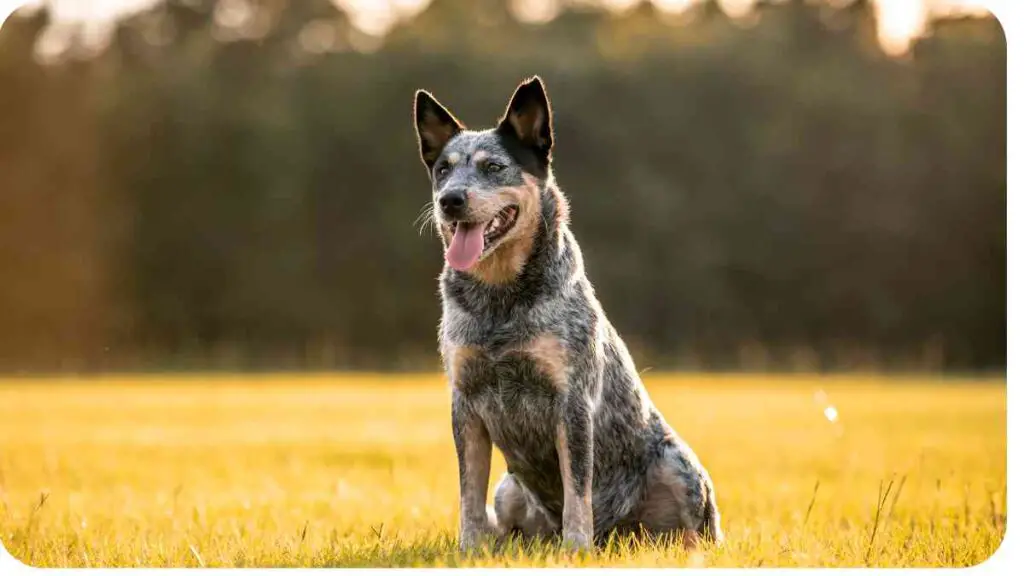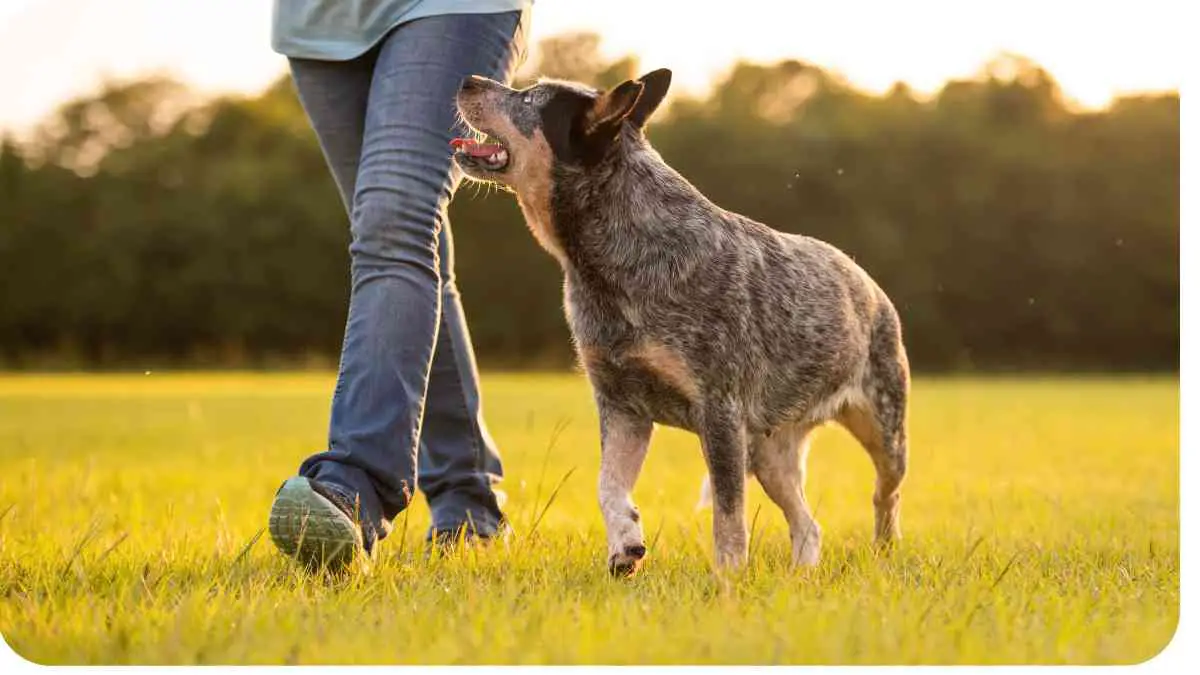The Australian Stumpy-Tail Cattle Dog is a unique and fascinating breed, known for its agility, intelligence, and distinctive appearance. With a history deeply rooted in working with cattle, this breed has earned its place as both a diligent worker and a loyal family companion.
But what exactly makes this breed stand out? Let’s dive into the details and uncover what you need to know about this remarkable dog.
| Key Takeaway |
|---|
| The Australian Stumpy-Tail Cattle Dog is a versatile and energetic breed with a strong work ethic. |
| This breed has a rich history rooted in cattle herding, originating from Australia. |
| They have a distinctive appearance with a compact, muscular build and a short, weather-resistant coat. |
| Regular exercise and mental stimulation are essential to keep them healthy and happy. |
| Proper training and socialization are crucial for managing their high energy and intelligence. |
| Routine grooming and health check-ups are important to address common health issues like hip dysplasia. |
| The breed is well-suited for families with ample space and can thrive in various living environments. |
History of the Australian Stumpy-Tail Cattle Dog

Origins and Development
The Australian Stumpy-Tail Cattle Dog, often simply called the Stumpy, has its roots in Australia where it was bred for herding and working with cattle. This breed is a product of crossbreeding between the Australian Cattle Dog (also known as the Blue Heeler) and various other breeds, including the Dingo. This mix was specifically designed to create a resilient and hardworking dog capable of managing cattle in the harsh Australian outback.
If you’re interested in the Australian Stumpy Tail Cattle Dog, you might also find our detailed guide on the Australian Cattle Dog Blue Heeler Mix insightful, as it covers essential aspects of this unique breed combination.
Table: Evolution of the Australian Stumpy-Tail Cattle Dog
| Time Period | Developmental Milestone |
|---|---|
| Late 1800s | Initial crossbreeding begins |
| Early 1900s | Breed standardization efforts |
| 1980s | Recognition by kennel clubs |
Key Historical Milestones
The breed saw significant milestones over the years, including its official recognition by major kennel clubs. The Stumpy’s early development focused on creating a dog that could handle the tough conditions of cattle driving and herding. By the mid-20th century, the breed had gained popularity not just for work but as a beloved pet.
Physical Characteristics
Size and Build
The Australian Stumpy-Tail Cattle Dog is a medium-sized dog with a compact, muscular build. They are known for their strength and endurance, which is essential for their herding duties.
Table: Physical Characteristics
| Feature | Description |
|---|---|
| Height | 17-20 inches (at the shoulder) |
| Weight | 35-50 pounds |
| Body Type | Muscular and robust |
Coat and Color
This breed’s coat is short, dense, and weather-resistant, suitable for various environmental conditions. The colors typically range from blue to red speckle, with some variations allowed.
For a deeper dive into similar breeds, our article on the Australian Shepherd Dog Temperament provides valuable information about their characteristics and behavior, offering a broader understanding of herding dog breeds.
Table: Coat Colors
| Color | Description |
|---|---|
| Blue Speckle | Mottled blue with darker flecks |
| Red Speckle | Mottled red with darker flecks |
Tail and Ears
True to its name, the Stumpy-Tail has a naturally short tail. Its ears are erect and pointed, adding to its alert and intelligent appearance.
Temperament and Personality

Behavioral Traits
The Australian Stumpy-Tail Cattle Dog is known for its high energy, intelligence, and loyalty. They are highly trainable but can be independent and strong-willed, making them excellent working dogs as well as spirited pets.
Training and Socialization
Training a Stumpy requires patience and consistency. Early socialization is crucial to ensure they grow into well-rounded adults. Their natural herding instinct can sometimes lead to nipping or chasing, which needs to be managed through proper training.
Health and Care
Common Health Issues
While generally healthy, the Australian Stumpy-Tail Cattle Dog can be prone to certain conditions like hip dysplasia and progressive retinal atrophy. Regular check-ups and a healthy lifestyle can mitigate these risks.
Table: Common Health Issues
| Health Issue | Description |
|---|---|
| Hip Dysplasia | Genetic condition affecting hips |
| Progressive Retinal Atrophy | Gradual loss of vision |
Grooming and Maintenance
Grooming is relatively straightforward, with regular brushing to manage shedding and occasional baths. Keeping their ears clean and checking for parasites is also important for their overall health.
To explore another related breed, check out our comprehensive overview of the Aussie Dog Red, which shares interesting facts and care tips that could complement your knowledge of the Australian Stumpy Tail Cattle Dog
Exercise and Activity Needs
Daily Exercise Requirements
This breed is highly active and needs regular exercise to stay healthy and happy. Daily walks, playtime, and mental stimulation are essential.
Table: Exercise Recommendations
| Activity | Frequency | Duration |
|---|---|---|
| Daily Walks | 1-2 times daily | 30-45 minutes each |
| Playtime | Daily | 15-20 minutes |
Recommended Activities
Activities that engage their herding instincts, such as agility courses or interactive toys, are particularly beneficial. They thrive in environments where they can use their intelligence and energy.
Diet and Nutrition
Nutritional Requirements
The Australian Stumpy-Tail Cattle Dog requires a balanced diet to maintain their energy levels and overall health. Quality dog food with appropriate protein and fat levels is crucial.
Table: Ideal Diet Composition
| Nutrient | Percentage |
|---|---|
| Protein | 20-30% |
| Fat | 8-15% |
| Carbohydrates | 30-50% |
Feeding Tips
Feeding should be adjusted based on their age, weight, and activity level. It’s important to avoid overfeeding and to provide fresh water at all times.
Living with an Australian Stumpy-Tail Cattle Dog

Family Compatibility
The Stumpy is a great family dog, known for being affectionate and protective. They do well with children and other pets, provided they are properly socialized.
Expanding your breed knowledge, our article on the German Shepherd Poodle Mix offers insights into another hybrid breed, which may appeal to those interested in the Stumpy Tail Cattle Dog and similar hybrids.
Space and Environment
While adaptable, this breed thrives in environments where they have space to move and play. A large yard or access to open areas is ideal.
Training Tips and Techniques
Basic Training Commands
Teaching basic commands like “sit,” “stay,” and “come” is essential for a well-behaved dog. Consistent training sessions and positive reinforcement work best.
Advanced Training Strategies
For advanced training, incorporating agility drills and obedience courses can help channel their energy and intelligence effectively.
Fun Facts About the Breed
- The Australian Stumpy-Tail Cattle Dog is also known as the “Stumpy.”
- They were used in cattle stations to manage large herds over vast distances.
- Their short tail is a natural characteristic, not a result of docking.
Adoption and Purchase Considerations
Finding a Reputable Breeder
When looking for a Stumpy, it’s important to find a breeder who prioritizes health and temperament. Checking references and visiting the breeder’s facility can help ensure you’re getting a healthy puppy.
For more on dog care, you might find our guide on the Bernese Mountain Dog Lifespan and Care helpful, as it provides important information relevant to maintaining the health of various dog breeds, including the Stumpy Tail Cattle Dog.
Adopting from a Rescue
Adopting from a rescue can be a rewarding experience. Many Stumpys in rescue organizations are looking for loving homes and can make excellent companions.
Conclusion
The Australian Stumpy-Tail Cattle Dog is a remarkable breed with a rich history and a dynamic personality. Whether you’re considering adopting one or just interested in learning more, this breed offers a unique blend of intelligence, energy, and loyalty. With the right care and training, they can be a fantastic addition to any family.
Further Reading
For more detailed information on the Australian Stumpy-Tail Cattle Dog, check out these resources:
- Pedigree: Australian Stumpy-Tail Cattle Dog
A comprehensive guide on the breed, covering their history, characteristics, and care requirements. - American Kennel Club (AKC): Australian Stumpy-Tail Cattle Dog
Detailed breed information from the AKC, including traits, health issues, and training tips. - Wisdom Panel: Australian Stumpy-Tail Cattle Dog
Insights into the breed’s genetics, personality traits, and general care advice.
FAQs
What is the history of the Australian Stumpy-Tail Cattle Dog?
The Australian Stumpy-Tail Cattle Dog was developed in Australia in the late 19th century. It was bred by crossing the Australian Cattle Dog with the Dingo and other breeds to create a robust herding dog capable of handling cattle in tough conditions.
What are the common health issues in Australian Stumpy-Tail Cattle Dogs?
Common health issues in this breed include hip dysplasia and progressive retinal atrophy. Regular veterinary check-ups and a healthy lifestyle can help manage these conditions.
How much exercise does an Australian Stumpy-Tail Cattle Dog need?
This breed requires substantial daily exercise, including walks, playtime, and mental stimulation. They thrive with at least 30-45 minutes of physical activity each day.
What is the ideal diet for an Australian Stumpy-Tail Cattle Dog?
An ideal diet for this breed includes a balanced mix of protein, fat, and carbohydrates. Quality dog food with appropriate nutritional content is crucial for their health and energy levels.
How can I train my Australian Stumpy-Tail Cattle Dog effectively?
Effective training involves consistency, patience, and positive reinforcement. Start with basic commands and progress to advanced training, incorporating activities that engage their natural herding instincts.

I am Dr Hellen James a veterinarian, pet lover, and writer. I have many years of experience caring for pets, including dogs, cats, birds, and fish (and even axolotls!). I love spending time with the animals in my life, especially when they are sick or need love.

